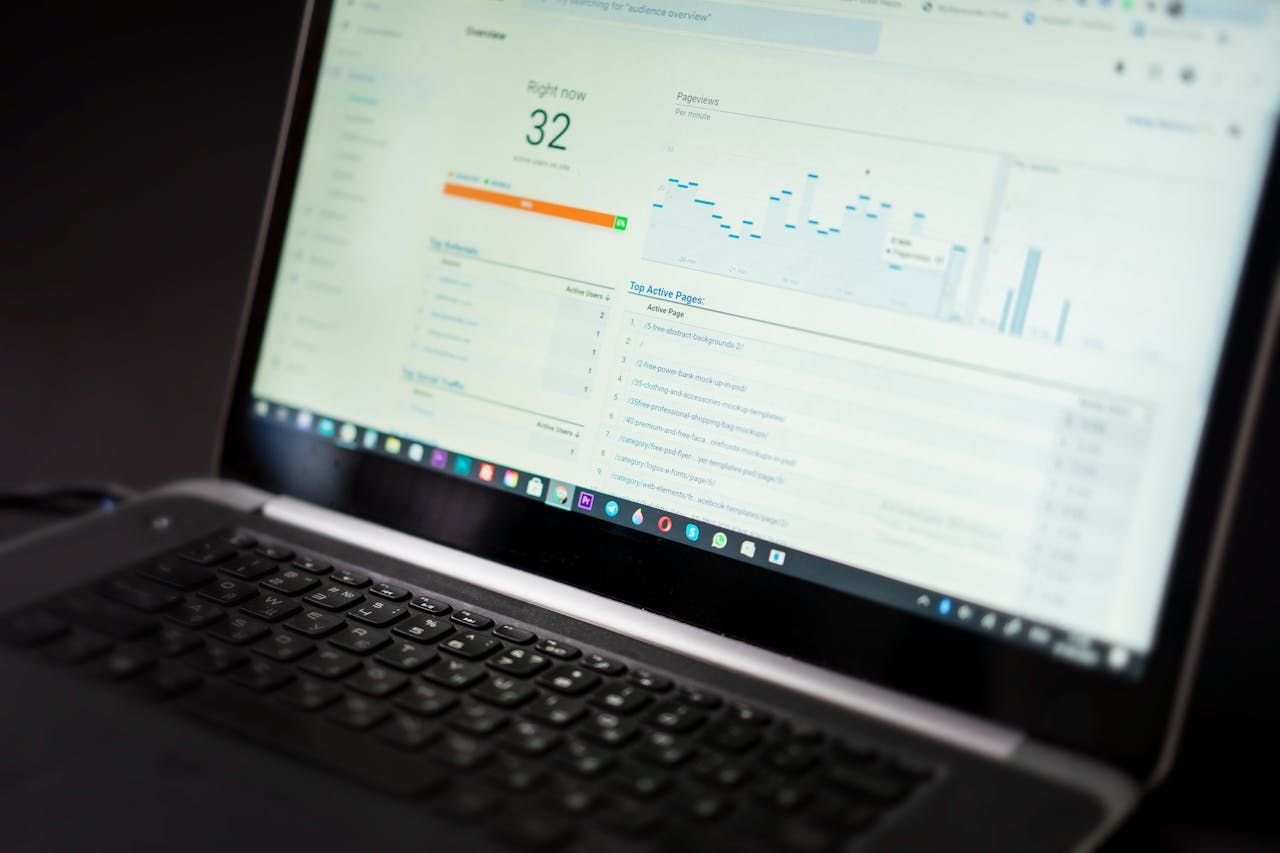Introduction
In the ever-evolving world of public relations, a well-crafted media contact list can be the difference between a successful campaign and a missed opportunity. Understanding and building this essential tool can empower PR professionals to connect effectively with key journalists and influencers who align with their brand's mission.
A robust media contact list not only streamlines outreach but also serves as a foundation for cultivating mutually beneficial relationships. By identifying your target audience, researching relevant outlets, and leveraging technology, you can optimize your media list to reflect the dynamic landscape of journalism today.
This article will explore essential tips and tools for crafting the perfect PR contact list. From the importance of personalization in outreach to maintaining relationships for long-term success, we will guide you through the best practices necessary to elevate your PR efforts.
Understanding the Importance of a Media Contact List
A media contact list is a crucial tool for anyone looking to boost their PR efforts. It helps in building relationships with journalists and reaching relevant media outlets. A well-constructed media list should have contact details of journalists, including email addresses and social media profiles. This ensures your EMAIL PITCH reaches the right people.
Key Components of a Media Contact List:
- Name of Journalist
- Email Address
- Social Media Profiles
- Publication or Media Outlet
Having this information organized in a contacts database allows for efficient communication and targeted email distribution. The list should include relevant contacts who cover your niche topics. These contacts become vital in ensuring your outreach connects with the right audience.
Benefits:
- Connect with relevant journalists
- Personalize your pitches
- Enhance relationships with key media contacts
To make the most of your PR strategy, always keep your list of contacts up-to-date. This will help in forming a strong pool of journalists and making your media outreach more effective.

Key Components of a Media List
A well-constructed media list is crucial for effective public relations. It ensures your message reaches the right audience. Here are the key components to include:
- Relevant Contacts: Identify journalists and editors who cover your niche topics. Use media databases for updated lists of journalists.
- Contact Details: Gather email addresses, phone numbers, and social media profiles. This gives multiple ways to reach out.
- Media Outlets: Include relevant media outlets that align with your target audience. List respected news sites and local publications.
- Personalization: Know each contact’s preferences. This helps in crafting personalized pitches, increasing the chance of engagement.
- Content Type: Understand which topics each journalist focuses on. This ensures your pitch is relevant.
- Distribution Methods: Decide whether to use email distribution, mass email, or both. Tailor your approach based on the contact.
Here's a simple table to organize your media list:
| Journalist | Outlet | Email Address | Topics | Preferred Contact |
|---|---|---|---|---|
| Jane Doe | Tech Today | jane@tech.com | AI, Cybersecurity |
Building a robust media list fosters strong relationships with journalists and increases coverage for your PR efforts.
Identifying Your Target Audience
Identifying your target audience is crucial for successful media outreach. Understanding who you need to reach helps in crafting personalized pitches and building strong relationships with journalists. Here's how you can identify your target audience:
- Research - Explore relevant media outlets and niche topics that align with your type of content. Examine the journalists who focus on these areas.
- Define - Recognize the demographics and interests of the audience you wish to engage with. This includes age, gender, location, and preferences.
- Analyze - Use social media profiles and news sites to gather information about your audience's habits and the journalists they follow.
- List Building - Create a well-constructed media list featuring relevant journalists and key media contacts. Include necessary contact details like email addresses and social media profiles.
| Step | Action |
|---|---|
| Research | Find relevant contacts |
| Define | Identify demographics and interests |
| Analyze | Study audience habits and journalists they follow |
| List Building | Compile a list of relevant journalists |
By having a clear target audience, your emails and pitches will reach more of the right people, leading to better relationship building with journalists.
Researching Relevant Media Outlets
Researching relevant media outlets is vital for effective communication and outreach. Here’s how you can create a well-constructed media list:
- Identify Your Target Audience: Know who you want to reach. This will guide you to the right media outlets.
- Compile Contact Details: Gather email addresses, social media profiles, and contact lists of key media contacts. This includes relevant journalists and news sites.
- Use Tools and Databases: Media databases can help build a database of journalists and make finding relevant media contacts easier.
- Personalize Your Approach: Prepare personalized pitches. This shows that you value your relationship with journalists and are not just sending mass emails.
- Analyze Niche Topics: Focus on the type of content that matches your niche. This helps find relevant media outlets that cover these topics.
Useful Elements:
| Key Steps | Description |
|---|---|
| Research | Identify target audience and relevant contacts |
| Tools | Use a reliable media database |
| Personalize | Tailor your emails to build relationships |
By following these steps, you can maximize your media outreach efforts.
Gathering Journalist Contacts
Gathering journalist contacts is key for effective PR and media outreach. Start with a well-constructed media list focusing on your target audience. Use a contacts database to find relevant contacts, including key media and niche topics.

Steps to Build Your Contact List:
- Identify Relevant Media Outlets: Focus on news sites and outlets that align with your type of content.
- Research Journalists: Find journalists covering your area of interest.
- Collect Contact Details: Look for email addresses and social media profiles.
- Verify Information: Ensure the contact details are up-to-date and correct.
Essential Information:
| Contact Type | Details Needed |
|---|---|
| Email Address | Find on professional profiles |
| Social Media | LinkedIn, Twitter, etc. |
| Phone Number | If available |
Email pitches should be personalized to build relationships with journalists. Avoid mass emails. Instead, use your email database for targeted email distribution. Maintaining these connections over time is vital and can be enhanced by regularly updating your journalist database.
Utilizing Media Databases for Efficiency
Utilizing media databases is a smart way to boost PR efficiency. These databases store contact details of journalists, making it easy to find relevant contacts for your target audience.

Benefits of Media Databases:
- Comprehensive Contact Lists: Access large pools of journalists from various news sites.
- Key Media Contacts: Easily identify media contacts relevant to your niche topics.
- Database Features: Many databases offer personalized outreach options and help build relationships with journalists.
A well-constructed media list allows you to streamline your EMAIL PITCH process. You can efficiently manage your email database to ensure your message reaches the relevant journalists and media outlets.
| Feature | Advantage |
|---|---|
| Journalist Database | Find niche-specific contacts |
| Social Media Profiles | Enhance relationship building |
| Email Distribution | Simplify mass email processes |
By using media databases, you save time and increase your chances of engaging with the right people. Always keep your contacts database updated to maintain its effectiveness.
Organizing Your Contact List Effectively
Organizing your contact list is vital for successful communication. A well-constructed media list ensures you're reaching the right people. Here’s how you can organize your contact list effectively:
- Identify Target Audience: Know who you want to reach. This includes relevant media outlets, niche topics, and key media contacts.
- Segment Your List: Group contacts by type, such as journalists, news sites, or social media profiles. Segmentation helps tailor personalized pitches to each group.
- Update Contact Details: Keep email addresses, social media handles, and phone numbers current. Outdated contact details can lead to missed opportunities.
- Leverage Tools: Use platforms with robust databases to find relevant contacts. These can offer thousands of contacts and simplify your database management.
- Track Relationships: Document your relationship with each journalist. Tracking interactions helps build stronger connections and effective Email pitch strategies.
Here’s a simple table for organization:
| Category | Example Contacts |
|---|---|
| Journalists | John Doe, jane@example.com |
| News Sites | BBC News, CNN, etc. |
| Social Media | @media_guru on Twitter |
By following these steps, you can manage your contact list efficiently, ensuring effective communication and outreach.
Personalizing Your Outreach to Journalists
Personalizing your outreach to journalists is key to effective communication. Building strong relationships with journalists can increase the chances of your story being featured. Here’s how you can personalize your outreach:

- Identify Relevant Contacts: Use a media database to find relevant journalists who cover your niche topics. Focus on those whose previous work aligns with your type of content.
- Gather Contact Details: Create a contacts database with email addresses, social media profiles, and contact details. Ensure you have key media contacts from relevant media outlets.
- Segment Your Contact List: Divide your list of contacts into groups based on the type of news they usually cover. This will help in crafting personalized pitches.
- Craft Personalized Pitches: Write email pitches that speak directly to the journalist’s interests and recent work. Avoid generic mass emails and highlight how your story fits their target audience.
- Maintain Relationships: Stay in touch and offer value even when you’re not pitching. Share useful insights or stories to keep the relationship active.
By personalizing your outreach, you enhance the relevance and impact of your communication efforts.
Maintaining Relationships with Media Contacts
Building and maintaining relationships with media contacts is crucial for effective PR. A well-constructed media list helps. It should include key media contacts, relevant journalists, and the outlets they represent. Here are some tips to keep these relationships strong:
- Know Your Contacts: Understand their interests. Tailor your messages to fit their niche topics.
- Personalized Pitches: Avoid mass email. Craft EMAIL PITCHES that appeal directly to the journalist's beat.
- Utilize Tools: Use a platform with a robust database to find relevant media contacts.
- Stay Updated: Regularly update your contact lists to ensure email addresses and social media profiles are current.
- Engage Socially: Follow journalists on social media. Engage with their content. Build a rapport beyond email distribution.

Here's a simple table to organize your media contacts:
| Contact Name | Email Address | Social Media | Niche Topics | Last Contacted |
|---|---|---|---|---|
| XYZ | xyz@email.com | @xyzTwitter | Tech Innovations | March 2023 |
Cultivating these relationships ensures your type of content reaches the right audience through trustworthy sources.
Regular Updates: Keeping Your List Relevant
Keeping your PR contact list up-to-date is crucial for effective communication. Regular updates ensure your list remains relevant and useful. Here are a few steps to keep your contact list in top shape:
- Identify Key Changes: Monitor news sites and social media profiles of journalists to note changes in roles or employment.
- Verify Contact Details: Double-check email addresses and phone numbers. A current list of contacts prevents bounced emails and missed opportunities.
- Segment Contacts by Niche Topics: Group your contacts by their interest and expertise. This ensures your email pitches reach the right people.
- Use a Media Database: Access a large pool of journalist information to maintain a well-constructed media list.
- Personal Contact: Nurture relationships with journalists. Personalized pitches based on their previous work can increase engagement.
| Steps | Actions |
|---|---|
| Key Changes | Check news sites, follow social media |
| Verify Details | Update email addresses |
| Segment Contacts | Group by niche topics |
| Use Databases | Access large journalist databases |
| Personal Contact | Build and maintain relationships |
By keeping your list updated, you ensure effective communication with relevant media outlets. Regular updates help in building a strong journalist database, enhancing your PR success.
Types of Media and Their Unique Roles
Understanding the different types of media and their unique roles can help you build a well-constructed media list. Here are some key types:
- Print Media: Newspapers and magazines provide in-depth news coverage and are useful for reaching niche topics.
- Broadcast Media: This includes TV and radio. They are effective for reaching a mass audience quickly.
- Online Media: News sites and blogs can target specific audiences and offer real-time updates.
- Social Media: Platforms like Twitter and Facebook allow for direct engagement with your target audience.
Each type has its own pool of journalists and relevant contacts that can be added to your contact database. Here’s a brief comparison:
| Media Type | Reach | Engagement Level |
|---|---|---|
| Print Media | Broad | Low |
| Broadcast Media | Mass | Medium |
| Online Media | Specific/Niche | High |
| Social Media | Targeted | Very High |
Building relationships with journalists from these various media outlets is crucial. Personalized pitches and relevant contact lists are key to successful media engagement.
Strategies for Amplifying Your PR Efforts
To amplify your PR efforts, creating a well-constructed media list is key. Start by identifying your target audience and focus on finding relevant media contacts. Use a robust database to access detailed information on journalists and their preferred topics.
Here are some strategies:
- Develop Relationships: Build long-term relationships with journalists. Engage with them on social media and keep their interests in mind.
- Personalized Pitches: Customize your email pitch to suit the preferences and interests of individual journalists.
- Update Your Contacts Database: Regularly update your contact lists to ensure you have the latest information on relevant contacts.
- Engage on Social Media: Connect with key media contacts through platforms like Twitter and LinkedIn.
- Focus on Niche Topics: Target journalists who specialize in your niche topics for better chances of coverage.
Maintaining a robust email database can enhance email distribution and reduce the chances of your PR pitch getting lost. By implementing these strategies, you can ensure your PR campaigns reach relevant media outlets and achieve greater success.
Tools and Software for Media List Management
Managing a media list is key for successful public relations efforts. Tools and software can help streamline this process. Here are some popular options:
- Cision: Known for its extensive pool of journalists, Cision provides access to thousands of journalist contacts. It aids in building a well-constructed media list, making it easy to target your niche topics.
- Hunter: This tool helps you find email addresses associated with specific domains. It's useful for building a personalized email database.
These tools save time and improve effectiveness. They offer features like contact lists, email distribution, and tracking relationships with key media contacts.
| Tool | Key Features |
|---|---|
| Cision | Journalist database, targeted outreach |
| Hunter | Email address search |
Using these resources can enhance your PR efforts and connect you with relevant media outlets.
Best Practices for Ensuring Deliverability of Pitch Emails
Ensuring your pitch emails reach the inbox is crucial for effective communication with journalists. Here are best practices to enhance deliverability:
- Build a Clean Email Database: Begin with verified email addresses. Remove any inactive or incorrect contacts from your list.
- Segment Your Contact Lists: Tailor your pitch to relevant journalists based on niche topics. This personalized touch increases the likelihood of engagement.
- Use a Reliable Email Distribution Tool: Employ tools that help manage your email database and maintain a well-constructed media list.
- Craft an Engaging Subject Line: Make it clear and concise. Highlight the key message to capture attention instantly.
- Optimize Email Content:
- Keep language simple and straight to the point.
- Avoid excessive links or attachments.
- Test Before Sending: Send test emails to see how they appear in various inboxes. Check for formatting issues.
- Monitor Deliverability Rates: Use analytics to track open and bounce rates. Adjust strategies accordingly.
Following these practices not only improves email deliverability but also strengthens your relationship with journalists and media contacts.
Measuring the Effectiveness of Your PR Outreach
Measuring the effectiveness of your PR outreach is crucial for success. Here's how you can do it:
- Track Email Opens and Clicks: Use your email database to see how many recipients open your emails and click on links. This indicates their interest in your type of content.
- Monitor Media Coverage: Check if relevant media outlets mention your brand. A rise in mentions means effective outreach.
- Engage with Journalists: Building relationships with journalists is key. If your pool of contacts replies or engages, your pitches are likely gaining traction.
- Social Media Impact: Observe the social media profiles of key media contacts. Increased shares or mentions mean your outreach is resonating.
- Feedback and Relationships: Direct feedback from relevant journalists can help gauge success. Strengthen these relationships for future endeavors.
You can use analytics tools to manage contact details and gauge your outreach. A well-constructed media list ensures your efforts reach the right audience.
| Key Metrics | Tools |
|---|---|
| Email Engagement | Email Database |
| Media Mentions | Monitoring Tools |
| Journalist Response | Personalized Pitches |
| Social Engagement | Social Media Tools |
Keep refining your contact lists to ensure your outreach is always on target.
Incorporating Follow-Up Techniques
Incorporating follow-up techniques into your PR strategy can boost your success. It helps build relationships with journalists and relevant media contacts. Here's how you can do it effectively:
- Personalized Follow-Ups: Use a well-constructed media list to tailor your emails. Address the journalist by name and refer to their previous work.
- Timing is Key: Wait a few days after the initial pitch before following up. This ensures you're not too pushy.
- Use Multiple Channels: Besides email, reach out via social media profiles for a more personal touch.
- Provide Value: Offer exclusive content or additional information to spark the journalist's interest.
- Be Brief but Clear: Keep follow-up emails concise. Reiterate the key points to remind the recipient of your pitch’s value.
- Use Tools: Consider a contacts database to track interactions. These help maintain a pool of journalists and organize your outreach.
Here's a quick checklist:
| Follow-Up Technique | Benefit |
|---|---|
| Personalized Emails | Builds rapport |
| Multi-Channel Approach | Broader reach |
| Timing | Respectful approach |
| Use of Tools | Efficient contact management |
By integrating these techniques, you can enhance your relationships with key media contacts.
Handling Feedback from Media Contacts
Handling feedback from media contacts is vital in building strong relationships with journalists and other media professionals. Here are some tips to manage this process effectively:
- Listen Actively: Always pay attention to the feedback received. This shows respect and helps in understanding their needs and preferences.
- Respond Promptly: Timely responses to feedback demonstrate professionalism and eagerness to maintain the relationship.
- Be Open-Minded: Consider all feedback, even if it's critical. It can offer valuable insights to improve your pitches or content.
- Implement Changes: If feedback points out areas for improvement, act on them. This shows media contacts that you value their opinions.
- Express Gratitude: Thank journalists for their feedback. This simple gesture can go a long way in fostering goodwill.
Below is a table to track the status of feedback:
| Media Contact | Feedback Received | Action Required | Status |
|---|---|---|---|
| Journalist A | Needs clearer data | Revise content | In Progress |
| Blogger B | Prefers images | Add visuals | Completed |
| Editor C | Likes story angle | No change needed | Completed |
By following these steps, you create a well-constructed media list and strengthen your relationship with your target audience.
Troubleshooting Common Media Outreach Challenges
Troubleshooting media outreach challenges can be tricky. Here are some common issues and how to fix them:
- Not Reaching the Right Audience
- Solution: Build a well-constructed media list with relevant journalists and media outlets. Use a reliable media database for accurate contacts.
- Low Email Open Rates
- Solution: Craft engaging subject lines and personalize your pitches to pique interest.
- Lack of Response from Journalists
- Solution: Strengthen your relationship with journalists. Follow them on social media and engage with their content.
- Vague Pitch Content
- Solution: Align your pitch with niche topics relevant to the journalist's focus. Provide clear and concise content.
- Difficulties in Tracking Results
- Solution: Maintain an updated contact database to monitor outreach efforts. Look into tools that offer built-in analytics.
| Challenge | Solution |
|---|---|
| Not Reaching the Right Audience | Build precise media lists; Use a reliable database |
| Low Email Open Rates | Craft engaging subject lines |
| Lack of Response | Engage on social media |
| Vague Pitch Content | Focus on niche topics |
| Tracking Difficulties | Use tools with analytics |
Effective media outreach is about connecting with the right people and providing them with valuable information. By addressing these challenges head-on, you can refine your approach and strengthen your PR campaigns.